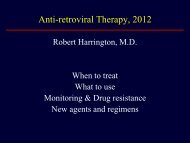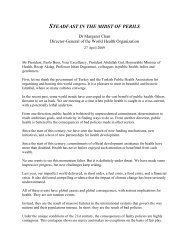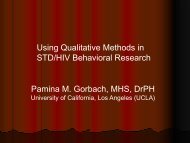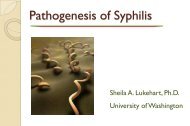The Evolution of HTA in Emerging Markets Health-Care ... - TREE
The Evolution of HTA in Emerging Markets Health-Care ... - TREE
The Evolution of HTA in Emerging Markets Health-Care ... - TREE
You also want an ePaper? Increase the reach of your titles
YUMPU automatically turns print PDFs into web optimized ePapers that Google loves.
OHE Consult<strong>in</strong>g Report for PhRMA<br />
5 January 2011<br />
A1.5 Incorporation <strong>of</strong> New Drugs <strong>in</strong> the Brazilian <strong>Health</strong> <strong>Care</strong><br />
System<br />
When a new drug comes to Brazil, it must be submitted to ANVISA for registration. ANVISA<br />
evaluates the safety and efficacy <strong>of</strong> treatment based on Phase III trials, and decides whether or not<br />
to approve the <strong>in</strong>dication <strong>in</strong> Brazil. After approval, the label <strong>of</strong> the drug for the approved <strong>in</strong>dication<br />
is registered. <strong>The</strong>re is not an <strong>of</strong>ficial deadl<strong>in</strong>e for each evaluation, but it usually takes between 12 to<br />
18 months.<br />
After the registration <strong>of</strong> the drug, CMED, which is a branch <strong>of</strong> ANVISA, def<strong>in</strong>es the price <strong>of</strong> the drug.<br />
This price is based on the category <strong>of</strong> the drug. It is considered category 1 if it has a valid patent <strong>in</strong><br />
Brazil and br<strong>in</strong>gs ga<strong>in</strong>s to treatment (def<strong>in</strong>ed as higher efficacy, same efficacy with fewer adverse<br />
events, or same efficacy and safety with lower costs), and then the approved price is the lowest<br />
price from 9 reference countries. If the drug is considered as Category 2 (either without a valid<br />
patent or without ga<strong>in</strong>s to treatment), the maximum price is the equivalent price <strong>of</strong> the treatment<br />
already registered <strong>in</strong> Brazil that provides equivalent efficacy. For <strong>in</strong>novative products, after the<br />
<strong>in</strong>itial price is set via external reference pric<strong>in</strong>g, it is adjusted subsequently by SUS/CMED for<br />
<strong>in</strong>flation, affordability, etc.) ,<br />
When the drug has an approved price and label <strong>in</strong> Brazil, it can be bought by patients out <strong>of</strong> pocket<br />
or reimbursed by private payers if adm<strong>in</strong>istered <strong>in</strong> ambulatory care or <strong>in</strong> hospitalized patients. Prices<br />
<strong>of</strong> drugs are updated every year to account for <strong>in</strong>flation and the percentage <strong>of</strong> price update is<br />
def<strong>in</strong>ed yearly by CMED.<br />
For a new drug, considered as high-‐cost, to be <strong>in</strong>cluded <strong>in</strong> the Component <strong>of</strong> Specialized<br />
Pharmaceutical Assistance, it must be submitted to CITEC for evaluation. CITEC gives guidance <strong>in</strong><br />
favour or aga<strong>in</strong>st the <strong>in</strong>clusion and the M<strong>in</strong>istry <strong>of</strong> <strong>Health</strong> decides about the f<strong>in</strong>al <strong>in</strong>corporation. In<br />
practice, a favourable guidance is mandatory for implementation. When it is positive, there is<br />
effectively national availability <strong>of</strong> the new technology. When it is negative or when there is no<br />
answer, the access to the technology is restricted. Importantly, the government does not publish the<br />
rationale beh<strong>in</strong>d the recommendations given (for positive and negative guidance). Thus, it is difficult<br />
to learn from the previous recommendations, and to understand government priorities.<br />
S<strong>in</strong>ce 2005, there have been 222 submissions to CITEC:<br />
<br />
<br />
<br />
<br />
<br />
44 technologies <strong>in</strong>corporated by the M<strong>in</strong>istry <strong>of</strong> <strong>Health</strong><br />
24 proposals for <strong>in</strong>corporation with a negative answer<br />
1 proposal for exclusion <strong>of</strong> technology with a negative answer (not excluded)<br />
technologies excluded from SUS reimbursement list<br />
12 technologies for genetic diseases with treatment protocols under development.<br />
77








